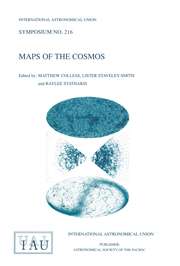No CrossRef data available.
Article contents
Helical Field Lines in an Erupting Filament
Published online by Cambridge University Press: 14 August 2015
Abstract
An example of an erupting filament that exhibited helical structure during a flare on 1971, September 17, was discussed. This sort of event is not rare. Examples of rotational effects in flares, prominences and surges have been reported by others such as Öhman (1968). Accompanied by type II radio emission and the visible flow of Hα gas across 1/2 the Sun's surface, the flare was very interesting in itself. However, here the emphasis is on possible ways in which the observed twist might develop. The latter is important because it yields information about: (1) the state of the subphotospheric field itself, and (2) the possibility of storing flare energy in the twisted filaments.
Information
- Type
- Part V: The Chromosphere in Active Regions
- Information
- Symposium - International Astronomical Union , Volume 56: Chromospheric Fine Structure , 1974 , pp. 197 - 198
- Copyright
- Copyright © Reidel 1974

